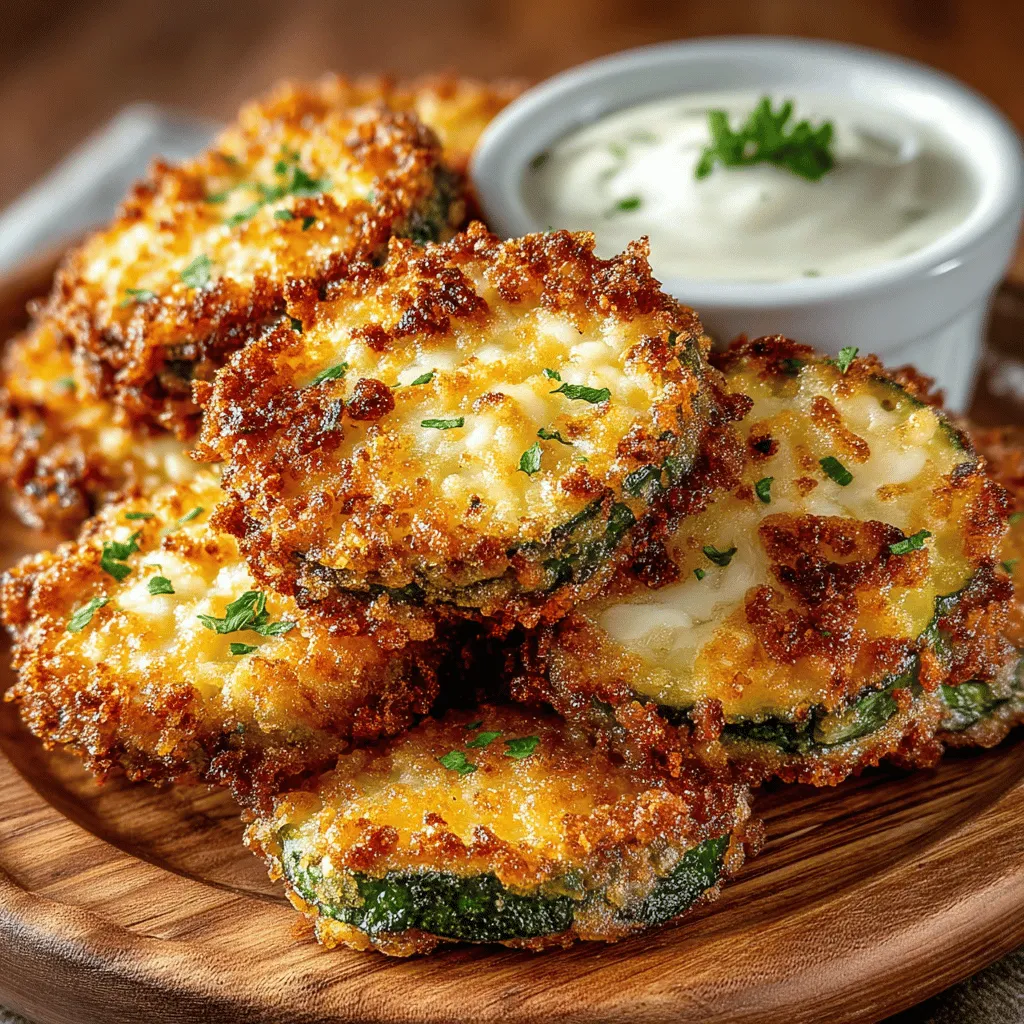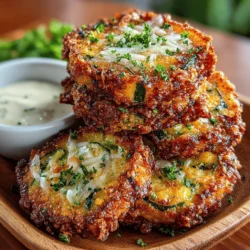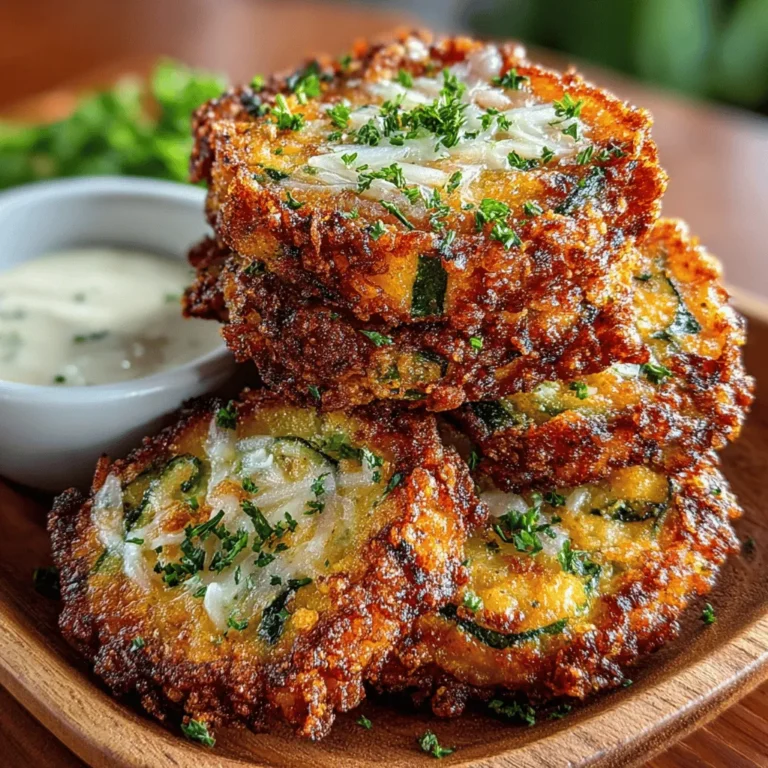Crunchy Delights: Golden Brown Fried Pickles
Fried pickles have carved out a special place in the hearts (and stomachs) of snack lovers everywhere, transcending their humble beginnings to become a beloved appetizer and party favorite. These crispy, tangy bites offer a delightful crunch that is hard to resist, making them the perfect addition to any gathering—be it a casual get-together, a backyard barbecue, or a festive celebration. With their unique flavor and satisfying texture, fried pickles can elevate even the simplest of meals, transforming them into memorable culinary experiences.
In this article, we will explore the recipe for golden brown fried pickles, a dish that promises simplicity without sacrificing flavor. Whether you are a seasoned home cook or a novice in the kitchen, this recipe will guide you through the steps to achieve that perfect crunch. Let’s dive into the world of fried pickles and discover their delicious potential.
Understanding Fried Pickles
Fried pickles hold a significant place in American culinary history, particularly within Southern cuisine. The origins of this popular snack can be traced back to the early 1960s, with claims of creation varying among several Southern states. The dish gained widespread popularity in the late 20th century, often served in diners, at fairs, and during sporting events. Its appeal lies in the harmonious blend of tartness from the pickles and the savory crunch from the batter, making it a delightful contrast.
Fried pickles have since made their way to menus across the United States, becoming a staple in bars and restaurants. They are often served alongside a variety of dipping sauces, from ranch to spicy remoulade, further enhancing their flavor profile. Interestingly, variations of fried pickles exist around the world, with some cultures experimenting with different pickling methods and spices, adding their unique twists to this classic dish.
Ingredients Breakdown
Before we embark on the cooking process, let’s take a closer look at the ingredients that will come together to create these crunchy delights. The key to achieving authentic fried pickles lies in the careful selection of each ingredient.
1. Dill Pickles: The star of the show, dill pickles provide the quintessential tangy flavor that makes fried pickles so irresistible. Using whole dill pickles or spears ensures that you get a satisfying crunch in every bite.
2. All-Purpose Flour: This ingredient serves as the base for the breading. It creates a sturdy coating that crisps up beautifully when fried.
3. Cornmeal: Adding cornmeal to the mix contributes a delightful texture and enhances the crunch factor of the fried pickles.
4. Spices: A combination of garlic powder, paprika, cayenne pepper, and black pepper brings depth to the flavor profile. These spices not only season the flour mixture but also add a hint of warmth and complexity that elevates the dish.
5. Eggs: Eggs act as a binding agent, helping the breading adhere to the pickles. They also contribute to the overall richness of the coating.
6. Oil: A neutral oil, such as vegetable or canola oil, is essential for frying. The right oil will allow the pickles to cook evenly, achieving that coveted golden-brown color.
The combination of these ingredients, along with the double-breading technique, will ensure that each pickle is perfectly coated and delivers an extraordinary crunch with every bite.
Preparation Steps
Preparing the Pickles
The first step in creating your golden brown fried pickles is to prepare the pickles themselves. Begin by selecting quality dill pickles—whole pickles or spears work best for frying. Once you have your pickles, it’s crucial to drain them thoroughly. Excess moisture can lead to a soggy coating, so take the time to press the pickles gently between paper towels to remove any excess liquid.
After draining, allow the pickles to sit on a wire rack for a few minutes to ensure they are dry. This step is essential for achieving the perfect moisture level before frying; too much moisture will cause the batter to slide off during cooking, while pickles that are too dry may not absorb the flavors of the breading.
Setting Up the Breading Station
Next, it’s time to set up your breading station. This involves creating a two-bowl system: one bowl for the dry ingredients and another for the wet. In the first bowl, combine all-purpose flour, cornmeal, and your chosen spices. Be sure to season the flour mixture generously, as this is where the bulk of the flavor will come from. The spices will not only enhance the taste of the fried pickles but also contribute to their enticing aroma as they fry.
In the second bowl, whisk together the eggs. This mixture will help the dry ingredients adhere to the pickles during the breading process. Having this setup ready will streamline your workflow and ensure that each pickle is evenly coated.
Coating the Pickles
Now that your pickles are prepped and your breading station is set up, it’s time to start the coating process using the double-breading technique. Begin by taking a pickle spear and dipping it into the egg mixture, ensuring it is fully coated. Let any excess egg drip off before transferring the pickle to the bowl with the flour mixture.
Toss the pickle in the flour mixture, making sure it is evenly coated. For the double-breading process, repeat this step: dip the coated pickle back into the egg mixture and then once more into the flour mixture. This additional layer of breading is crucial for achieving that extra crunch that fried pickles are renowned for.
Once each pickle is coated, place them on a wire rack or a parchment-lined baking sheet to allow the breading to set slightly before frying. This step helps the coating adhere better during cooking, ensuring that you achieve that perfect golden-brown exterior.
With your pickles prepped and ready for frying, you are well on your way to creating a delicious batch of crispy fried pickles that will impress your friends and family. In the next section, we will delve into the frying process, where the magic truly happens. Stay tuned for tips on achieving the perfect fry and the best ways to serve these tantalizing snacks!

Benefits of Thorough Coating for Texture and Flavor
One of the key secrets to achieving perfectly crunchy fried pickles lies in the thorough coating of the pickles before frying. The combination of flour, cornmeal, and seasonings not only enhances the flavor but also contributes to that irresistible crunch that everyone loves. A well-coating ensures that the pickles are enveloped in a crispy shell that contrasts beautifully with their tangy, juicy interior. This not only elevates the overall eating experience but also helps to seal in moisture, preventing the pickles from becoming soggy during frying.
Frying Process
Heating the Oil
To begin frying your pickles, the first step is to heat the oil. A deep frying method is preferred for achieving that golden-brown finish. Use a heavy-bottomed pot or a deep fryer for this purpose. Fill it with enough oil to fully submerge the pickles, typically about 2-3 inches deep.
Ideal Oil Temperature for Frying
The ideal frying temperature for pickles is between 350°F to 375°F (175°C to 190°C). This temperature range ensures that the coating becomes crispy without absorbing too much oil. A kitchen thermometer is an invaluable tool here; it guarantees that your oil is at the right temperature before adding the pickles. If you don’t have a thermometer, you can test the oil by dropping in a small piece of batter. If it bubbles vigorously and rises to the surface quickly, your oil is ready.
Safety Tips for Frying at Home
Frying can be a bit daunting, especially if you’re new to it. Here are some essential safety tips:
– Keep a Lid Nearby: In case of an oil fire, a lid can smother the flames. Never pour water on a grease fire.
– Use a Deep Pot: This minimizes the risk of oil spilling over while frying.
– Avoid Water: Ensure your pickles are dry before coating and frying. Water can cause the oil to splatter, increasing the risk of burns.
– Stay Attentive: Never leave hot oil unattended. Always monitor the frying process closely.
Frying the Pickles
Once your oil has reached the desired temperature, carefully add the coated pickles to the pot. It’s best to fry them in batches to prevent overcrowding, which can lower the oil temperature and result in greasy pickles.
Timing and Visual Cues for Achieving Golden Brown Color
Fry the pickles for about 2-3 minutes on each side, or until they are golden brown. The visual cues to look for include a deep golden color and a consistent bubbling action in the oil. If the pickles start to become too dark, reduce the heat slightly.
Importance of Not Overcrowding the Pan for Even Cooking
Overcrowding the pan is a common mistake that can lead to uneven cooking. If too many pickles are added at once, they can lower the oil temperature, causing the coating to absorb excess oil instead of frying crisply. To avoid this, fry in small batches, giving each pickle enough space to cook evenly.
Draining and Cooling
After frying, it’s crucial to drain excess oil from your pickles. Use a slotted spoon to remove them from the oil, allowing them to briefly drain over the pot before transferring them to a paper towel-lined plate.
Techniques for Draining Excess Oil Effectively
For optimal draining, place fried pickles on a wire rack over a baking sheet. This allows air to circulate around the pickles, preventing them from becoming soggy. Alternatively, paper towels are effective but be sure to flip the pickles after a minute to ensure both sides are well-drained.
Importance of Cooling on Paper Towels for Texture
Letting the fried pickles cool on paper towels is essential for achieving that desired crunch. The paper towels will absorb any lingering oil, creating a crispy exterior. If you skip this step, the steam can make the coating soft, diminishing the texture that makes fried pickles a favorite snack.
Serving Suggestions
Presentation is key when serving fried pickles, and there are numerous creative ways to do so. For a classic approach, arrange the fried pickles in a circular pattern on a platter and serve them with small bowls of dipping sauces in the center.
Presentation Ideas for Serving Fried Pickles
1. Platter Style: Serve with a garnish of fresh herbs, like parsley or dill, for a pop of color.
2. Individual Cups: Use small cups for individual servings, perfect for parties or gatherings.
3. On a Stick: For a fun twist, thread the pickles onto skewers for easy eating.
Discussion of Popular Dipping Sauces
Fried pickles pair beautifully with a variety of dipping sauces. The most popular options include:
– Ranch Dressing: Creamy and herby, ranch is a classic choice that complements the tanginess of the pickles.
– Spicy Aioli: For a kick, consider serving them with a spicy aioli made from mayonnaise, garlic, and chili flakes.
– Honey Mustard: A sweet and tangy option that contrasts nicely with the salty crunch of the fried pickles.
Creative Twists on Traditional Serving Methods
For those looking to elevate their fried pickles, try these creative serving suggestions:
– Pickle Fries: Cut the pickles into fry shapes for a different texture and presentation.
– Added Spices: Experiment with different spice blends in your flour mixture, such as Cajun seasoning or smoked paprika, for a unique flavor profile.
– Cheese Infusion: Mix grated cheese into the batter for cheesy fried pickles that are sure to impress.
Nutritional Information
Fried pickles can be a delightful indulgence, but it’s important to be mindful of their nutritional profile. A serving of fried pickles typically contains around 250-300 calories, depending on the portion size and oil absorption.
Overview of the Nutritional Profile of Fried Pickles
– Calories: Approximately 250-300 per serving
– Fat: 15-20 grams, depending on the oil used
– Carbohydrates: 25-30 grams
– Protein: 2-5 grams
Discussion on Portion Control and Enjoyment Within a Balanced Diet
While fried pickles can be higher in calories and fat than other snacks, moderation is key. Enjoying them as an occasional treat rather than a daily indulgence allows you to savor their deliciousness without compromising your health goals. Pairing them with a salad or vegetable platter can also create a more balanced meal.
Comparison with Other Popular Snack Foods
When compared to other popular snack foods like potato chips or nachos, fried pickles can be a slightly healthier alternative, especially when made at home. They contain fewer preservatives and can be customized to suit your dietary preferences. Plus, the addition of pickles offers the benefit of probiotics, which are good for gut health.
Conclusion
The joy of making and enjoying golden brown fried pickles is unparalleled. They serve as a delightful snack or appetizer, perfect for any meal or gathering. The process of frying your own pickles not only rewards you with a delicious treat but also provides a sense of accomplishment that store-bought versions simply cannot match.
We encourage you to try this recipe for a delicious addition to your next gathering or a cozy night in. The satisfaction of homemade snacks, combined with the fun of sharing them with family and friends, makes for a truly delightful experience. With this recipe in hand, you’re well on your way to impressing everyone with your culinary skills and creating lasting memories over a plate of crunchy fried pickles. Enjoy the crunch and savor every bite!


